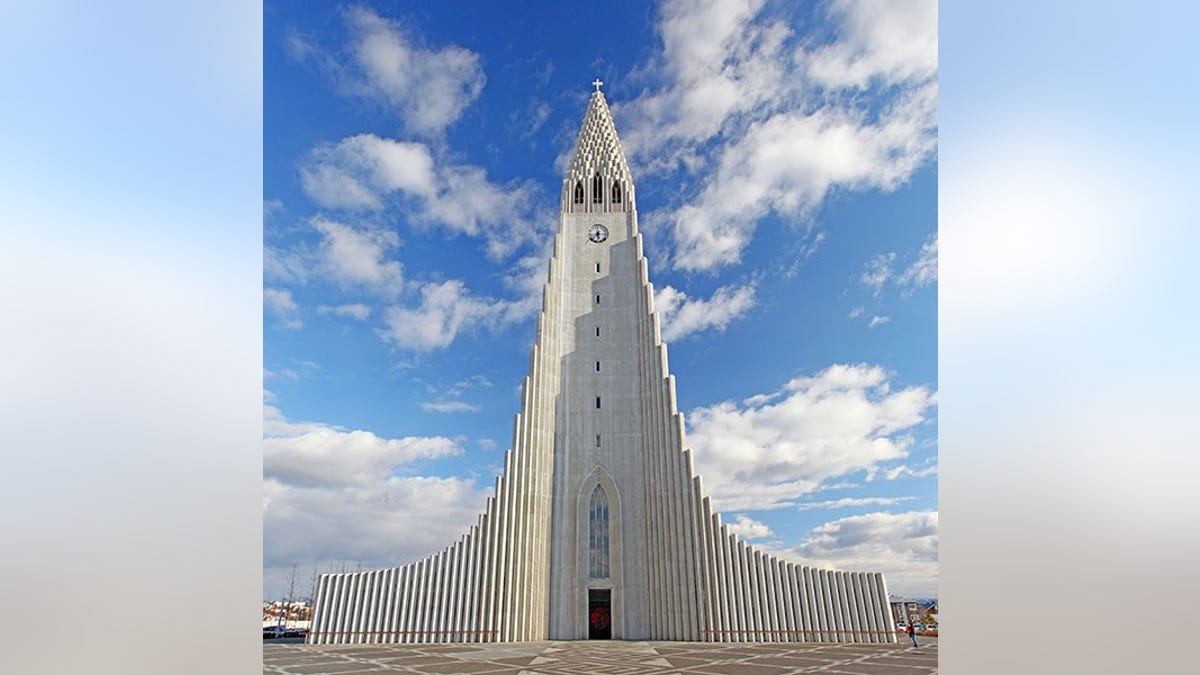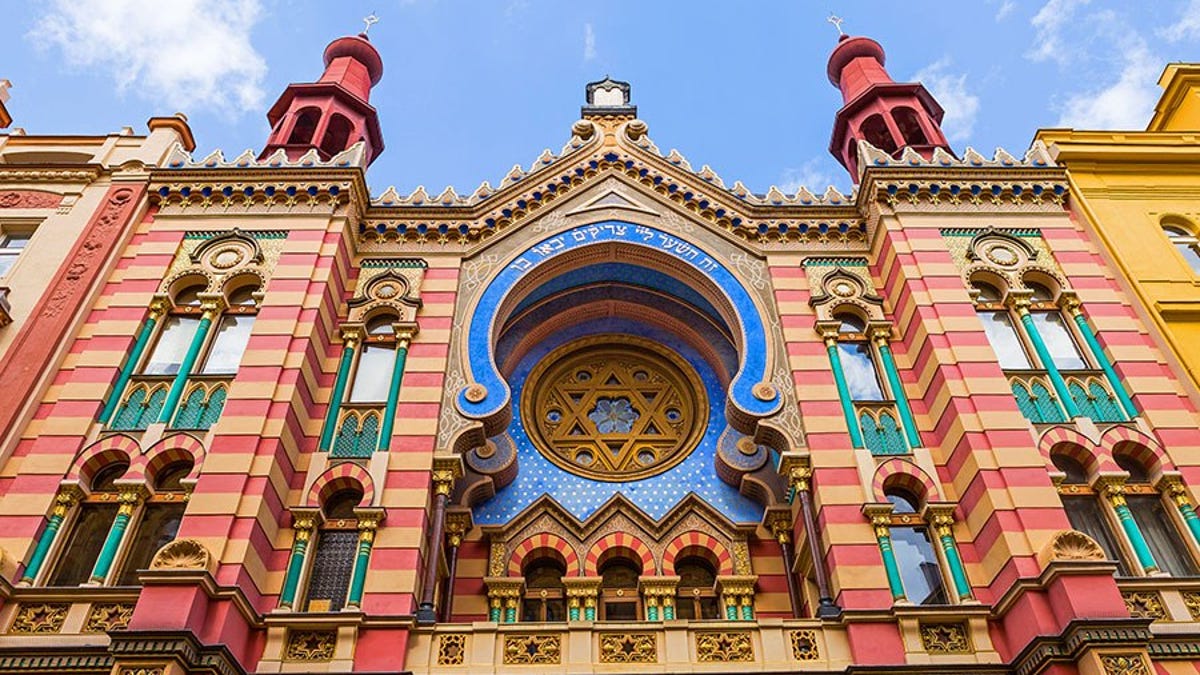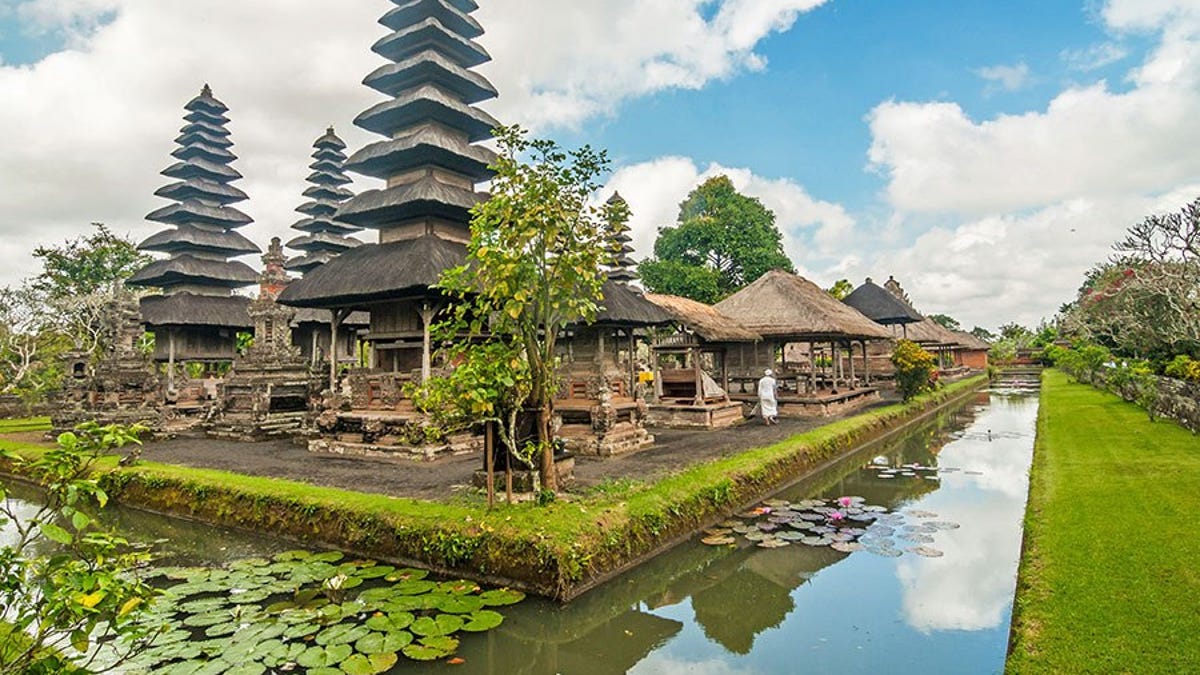Some of the most beautiful architecture around the world doesn't come in the form of a residential home or a towering skyscraper. Rather, it comes in the form of houses of worship; places where people go to separate themselves from the outside world, and are able to do so in some truly stunning structures.
From ancient temples that have been standing for centuries to modern mosques, take a look at some of the most beautiful houses of worship from around the world.
1. Borgund Stavechurch, Borgund, Norway

(Jason Lindsey / Alamy)
Built around 1180, the Borgund Stavechurch is one of the best-preserved traditional wood churches in Norway. A stone foundation was added to the design to help prevent the rot that destroyed the town’s previous church, and the building is supported by 12 vertical posts, or staves. The doors and parts of the roof are intricately carved with dragons to ward off evil spirits. Recently, the church served as inspiration for architecture in the Disney film Frozen.
2. Chapel of the Holy Cross, Sedona, Arizona

(M&N / Alamy)
In the 1930s, after having a vision of a cross spread across the Empire State Building, sculptor Marguerite Brunswig Staude was inspired to build a skyscraper cathedral in Europe and enlisted the help of Lloyd Wright, Frank Lloyd Wright’s son. But when World War II broke out, they were forced to postpone the project. After the war she revised her idea and picked a site near her home in Sedona, Arizona. (Wright abandoned the project when Staude refused to stick to the initial design.) The Catholic church was completed in 1956, with the assistance of San Francisco architecture firm Anshen & Allen, and is distinguished by a large cross rising from the craggy red rocks and defining the silhouette of the structure.
3. Golden Temple, Amritsar, India

(Realy Easy Star / Tullio Valente / Alamy)
The Golden Temple—also called Sri Harmandir Sahib or Sri Darbar Sahib—is the holiest shrine in the Sikh religion. Located in northwest India, near the border of Pakistan, the marble temple was constructed in 1601 by Guru Arjan Sahib and sits within a pool traversed by a 202-foot-long marble causeway. The magnificent interiors are embellished with embossed gold surfaces and marble inlaid with semiprecious stones. The building did not receive its signature exterior gilding until 1830, when Maharaja Ranjit Singh sponsored several lavish improvements.
4. Great Mosque of Djenne, Djenne, Mali

(Gavin Hellier / Alamy)
Originally built in the 13th century and reconstructed in 1907, the Great Mosque of Djenné is made of mud-and-straw bricks covered with mud plaster, and palm-wood beams. Each year during a festival known as Crepissage de la Grand Mosquée, mud masons add a new layer, using the beams that jut from the façade as scaffolding. Over time the annual application has given the UNESCO World Heritage site—and the largest surviving example of African mud architecture—its rounded edges.
5. Hallgrimskirkja, Reykjavik, Iceland

(Drew Buckley / Alamy)
Lending a commanding presence to the Reykjavik skyline, Hallgrímskirkja stands nearly 250 feet tall. Architect Guðjón Samúelsson’s unique design for the Lutheran church was inspired by the Icelandic basalt lava flows. Completed in 1937 and named for religious poet Hallgrímur Pétursson, the building offers excellent views of the city and also boasts an impressive 25-ton, 5,275-pipe organ.
6. Jubilee Synagogue, Prague

(Matthew Hall / Alamy)
The Jubilee Synagogue, also known as the Jerusalem Synagogue after its location on the street Jeruzalémská, was built in 1906 to commemorate the 50th anniversary of Austro-Hungarian emperor Franz Joseph’s ascension to the throne. It replaced three synagogues that were removed during the clearing of the Jewish ghetto in the late 19th and early 20th centuries. Designed by Viennese architect Wilhelm Stiassny, the distinctive striped structure combines Moorish, Byzantine, and Art Nouveau styles and is known for its beautiful, intricately painted interiors.
7. Kizhi Pogost, Kizhi Island, Russia

(Robert Harding Picture Library LTD / Alamy)
Set on Kizhi Island in Russia’s Lake Onega, this UNESCO World Heritage site consists of an enclosure, or pogost, containing two churches—one 17th century, the other 18th century—and an 1862 bell tower. The chapels were built entirely of wood, and one was designated for summer use and the other for winter, a common practice in Russia at the time. The heated winter structure, the Church of the Intercession, was built in 1694 of pine and aspen and is topped with nine domes. The Church of the Transfiguration—the larger pine, spruce, and aspen summer church—was completed in 1714 using an octagonal framework and is topped with a crown of 22 domes.
8. Korean Presbyterian Church, Oakland, New Jersey

(The Presbyterian Church of New Jersey)
Arcari + Iovino Architects were recently asked not only to design a new church for an Oakland, New Jersey, congregation, but also to create a campus for the parish on the 24-acre site. The 2011 structure includes a chapel and a bi-level, glass-roofed multipurpose space with a basketball court and mezzanine gallery that displays art by members. Within the sanctuary a row of finlike walls diffuse light and heighten the acoustics.
9. Pura Taman Ayun, Bali, Indonesia

(Ugo Cei / Alamy)
Built in 1634, Pura Taman Ayun was formerly the royal temple of the Mengwi Kingdom of Bali. The Hindu complex, which is part of a UNESCO World Heritage site, includes inner and outer moats protecting the courtyards. Among the notable structures on the grounds are the kori agung or gateway, leading to the innermost courtyard, and two-dozen meru or pagoda-like towers, made to symbolize the surrounding mountains. The tallest, an 11-tiered meru, references Gunung Batukau, the second-tallest mountain in Bali.
See more of the most beautiful houses of worship from around the world.
More from Architectural Digest
Ralph Lauren's Jaw-Dropping Car Collection
Frank Gehry’s Best Projects of all Time
